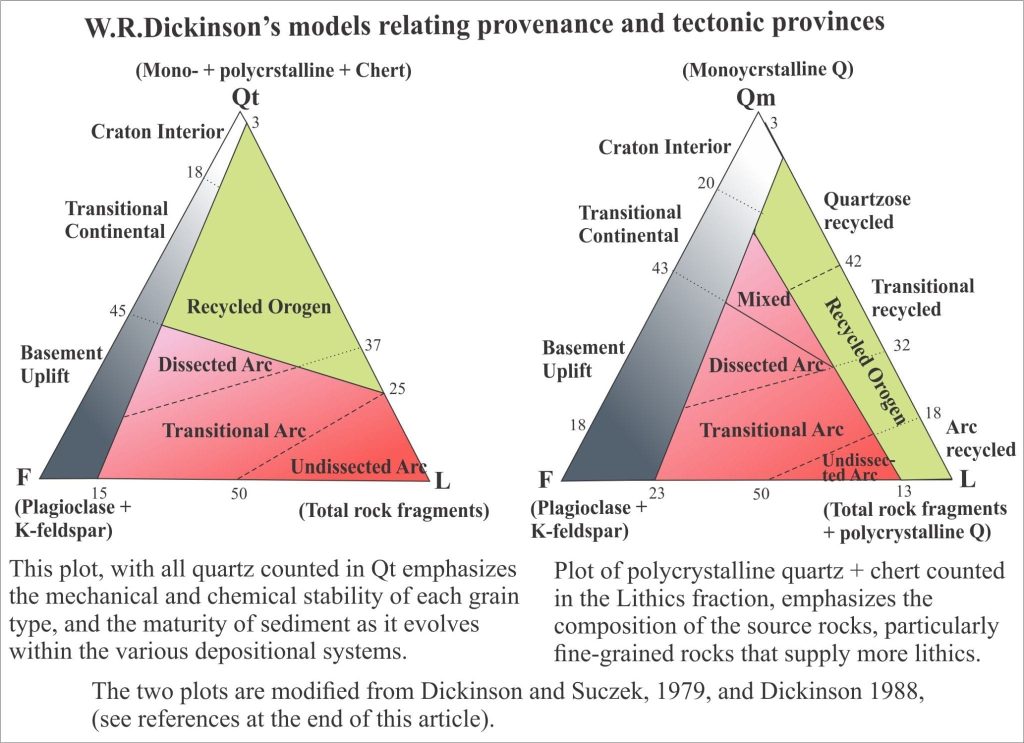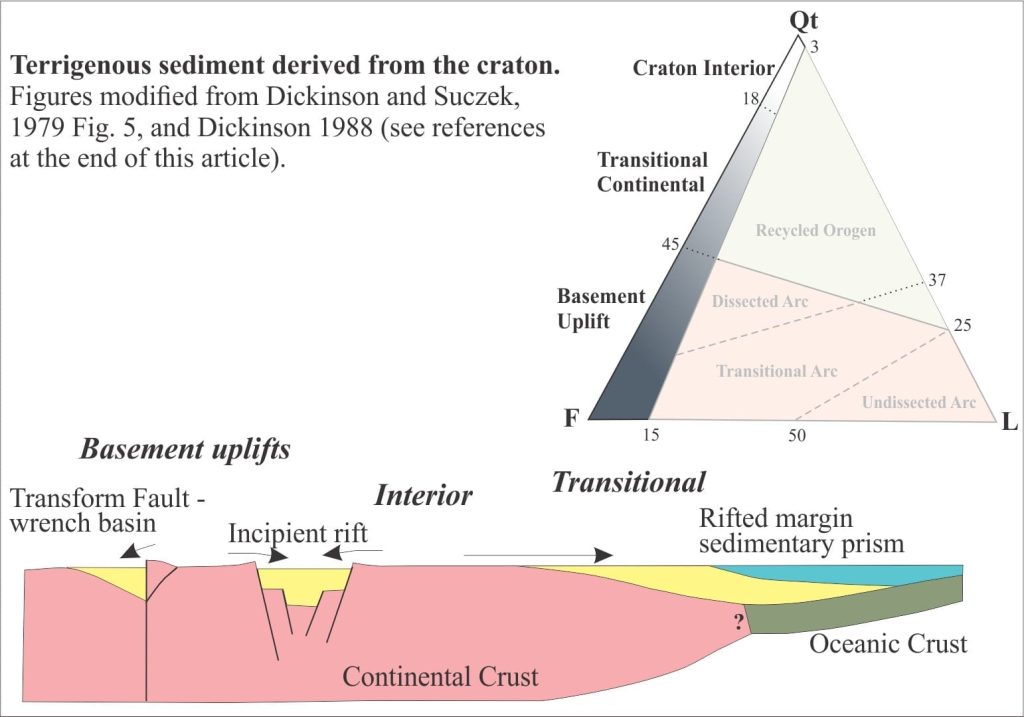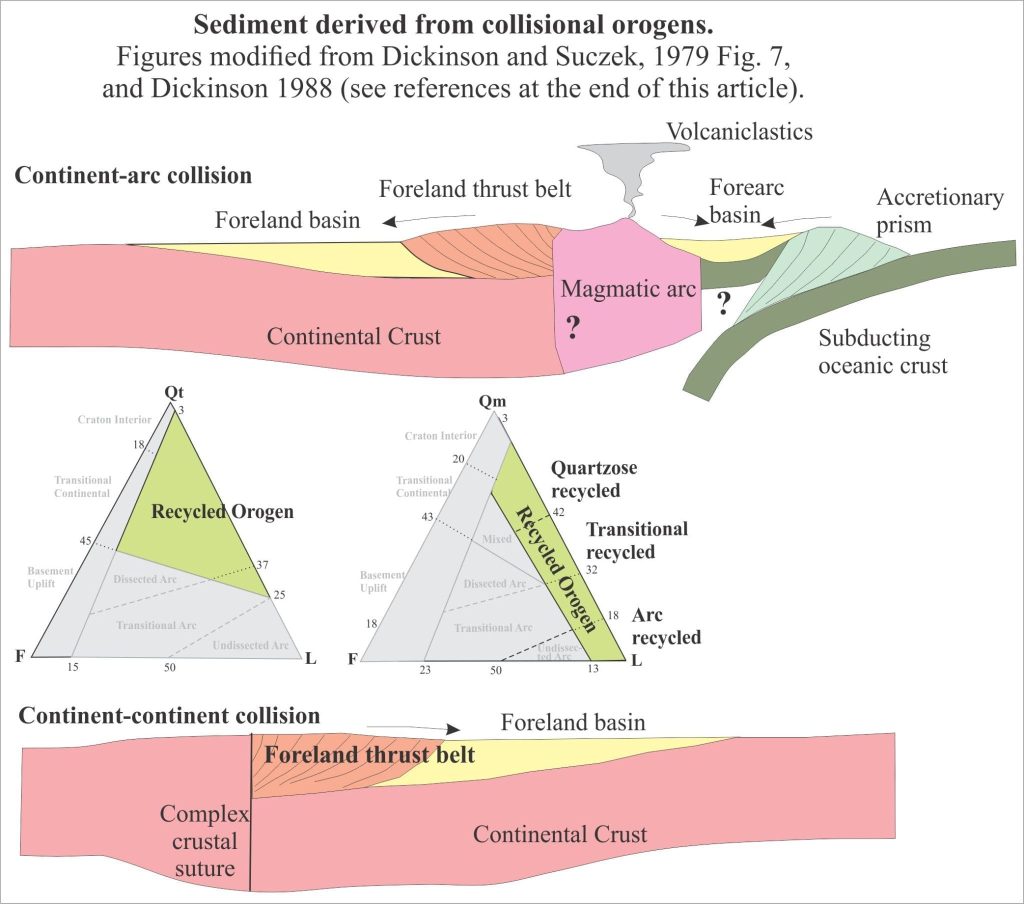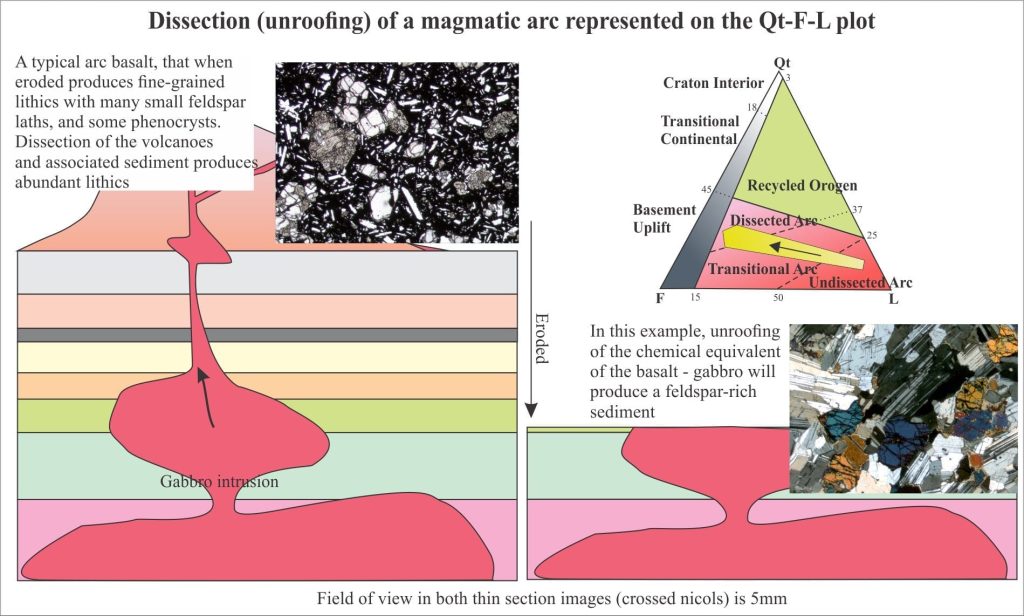This post is part of the How To…series – Provenance, sedimentary basins and plate tectonics
Deciphering the history of sedimentary basins is one of the more exciting tasks geologists can undertake; the provenance of sandstones plays an important part in this adventure.
Sedimentary basins are crustal structures. They are regions of long-term subsidence, responding to tectonic and sediment loads, cooling in the crust and upper mantle, and tectonic dislocation along crustal structures like transform faults. The processes that create sedimentary basins and the sediments that fill them are inextricably linked to plate tectonics.
The idea that the composition of sedimentary rocks was related to large-scale crustal processes was acknowledged by Charles Darwin, Charles Lyell, Henry Sorby and others, but it wasn’t until the 1950s – 60s that sedimentologists began to develop empirical models of sandstone provenance. Robert Folk, Francis Pettijohn, Robert Dott and contemporaries observed links between sediment composition and tectonic domains (or provinces), such as stable cratons and geosynclines – this was the era before plate tectonics.
For geoscientists, the discovery and development of plate tectonic theory changed everything. This is where William R. Dickinson comes into the picture. Dickinson recognized the fundamental link between sedimentary basins and plate tectonics, particularly at plate boundaries. He developed models that relate the modal composition of sandstones to plate tectonic provinces such as collision orogens, magmatic arcs, forearc and foreland basins, and stable cratons. It is important to remember that these models are based on empirical evidence – analysis of 1000s of thin sections that he and many others had recorded from diverse locations.
The models are based on ternary plots like those used by Dott to classify sandstones. Dickinson and his co-workers used different combinations of the quartz, feldspar and lithics end-members to emphasize certain characteristics of the sediment and the source rocks. Both models shown here use the full suite of minerals. Other plots used only the lithic components, or polycrystalline quartz and lithics.
The Qt-F-L plot combines all varieties of quartz (mono- and polycrystalline quartz, including chert) as a single category and as such emphasizes the maturity of the sediment. Deposits with greater volumes of quartz are generally considered more mature, where mechanical and chemical weathering during sediment transport and deposition have removed less- stable components like feldspar and lithics.
In the Qm-F-L plot, polycrystalline quartz is shifted to the lithic field and in so doing emphasizes the source rocks and production of rock fragments (the quartz component consists only of monocrystalline varieties). Lithics here are key indicators of reworked orogenic provinces along continent-continent and continent-magmatic arc collision provinces. Here, erosion of sedimentary cover and volcanic rocks tends to produce greater proportions of rock fragments.
The second set of diagrams shows typical plate tectonic configurations that correspond to the various QFL fields. The diagrams are highly simplified. In addition to pigeonholing sandstone compositions, the plots provide a useful means of documenting systematic changes as uplift and erosion expose deeper crustal rocks.
For example, unroofing a fold and thrust belt along a collision margin will yield an initial rush of lithics derived from the deformed sedimentary cover. Gradual exposure of a metamorphic core will yield increasing volumes of quartz (mostly polycrystalline) and a new suite of heavy minerals. Likewise, unroofing a magmatic arc complex (the “dissected arc” field in these plots) will provide abundant volcanic lithics followed by more felsic sediment from the deeper intrusive rocks. This is shown schematically in the cartoon below.
The Dickinson plots, like any scientific model, are highly simplified versions of the real world. No two collisional orogens are alike, no two magmatic arcs are exact duplicates. Finding exceptions to any of the models does not indicate their failure – quite the opposite. Their value lies in providing a direction for investigation.
Dickinson’s models have been through several iterations, but their basic structure has survived 40 years of intense scrutiny by geoscientists. They are still useful starting points for unravelling the links among sediment composition, sedimentary basins and plate tectonics.
Check out the companion article – Provenance of sandstones
Some useful texts and papers:
Petrology of Sedimentary Rocks, Sam Boggs Jr. 2012
Dickinson, W. R. and C. A. Suczek, 1979, Plate tectonics and sandstone compositions: American Association of Petroleum Geologists Bulletin, v. 63, p. 2164–2182.
W. R. Dickinson, 1988. Provenance and Sediment Dispersal in Relation to Paleotectonics and Paleogeography of Sedimentary Basins. In New Perspectives in Basin Analysis, Editors, Karen L. Kleinspehn & Chris Paola, Springer-Verlag, pp 3-25.
R.V. Ingersoll, T. F. Lawton, and S.A. Graham, 2018. Tectonics, Sedimentary Basins, and Provenance: A Celebration of the Career of William R. Dickinson. Geological Society of America, Special Paper v.540, 757 pages






